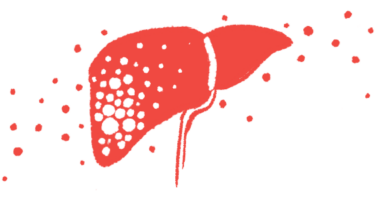A third of CF lung transplant patients are prescribed Trikafta
Post-transplant use of CFTR modulator tied to sinus disease, low BMI

Almost 30% of cystic fibrosis (CF) patients who had a lung transplant in the U.S. were prescribed Trikafta after surgery, a recent analysis shows.
Sinus disease and low body mass index (BMI), a measure of body fat that takes into account weight and height, were associated with receiving the CFTR modulator treatment after surgery in some centers.
“More research is needed to assess the impact of [Trikafta] on other CF-extrapulmonary manifestations [in organs other than the lungs] in transplant recipients and the safety of ETI post-[lung transplant],” the researchers wrote. The study, “Elexacaftor/tezacaftor/ivacaftor prescription in lung transplant recipients with cystic fibrosis in the US,” was published in the Journal of Cystic Fibrosis.
Trikafta (elexacaftor/tezacaftor/ivacaftor), a CFTR modulator therapy marketed by Vertex Pharmaceuticals, has significantly improved outcomes for many CF patients. It targets the cause of CF, improving the functionality of the CFTR protein when CF is caused by specific mutations in the CFTR gene. Among its reported benefits, the therapy enhances lung function, eases digestive symptoms, and promotes better nutritional status.
Despite these advancements, a lung transplant remains an important option for many patients with advanced CF lung disease. In the U.S. alone, about 3,000 patients are alive after a lung transplant, but the “outcomes still lag well behind those of other solid organ transplants,” the scientists wrote.
According to CF and transplant communities, using Trikafta after a lung transplant might improve overall health and CF manifestations in organs and tissues other than the lungs (extrapulmonary). Nonetheless, current research is limited for reasons such as the exclusion of lung transplant recipients from Trikafta trials.
What increases the chance of being prescribed Trikafta?
Here, researchers led by a team at the University of Washington retrospectively analyzed data from CF patients registered at the Cystic Fibrosis Foundation Patient Registry (CFFPR), which represents about 77% of CF patients in the U.S. Specifically, they analyzed data from patients who underwent a lung transplant through December 2022 and were prescribed with Trikafta after surgery. Using a multivariate analysis, which is based on the relationship between several variables, they sought to identify factors associated with prescribing Trikafta.
The results showed certain clinical conditions correlated with the likelihood of receiving Trikafta. Notably, patients with sinus disease were 2.12 more likely to be prescribed Trikafta. Those with a BMI of less than 18.5 kg per square meters were 1.52 more likely to receive it.
But those without a F508del mutation — the most common CF-causing mutation — were significantly less likely to receive Trikafta, which is approved in the U.S. for patients 2 and older who have at least one F508del mutation in the CFTR gene or another responsive mutation.
The type of care center where patients received treatment also played a crucial role. Patients attending middle- or low-prescribing CF centers were significantly less likely to take Trikafta than those treated at high-prescribing centers. A low likelihood also was seen in those receiving care at centers with fewer than 10 lung transplant recipients with CF. Race, ethnicity, and insurance status showed no significant association with a Trikafta prescription.
An analysis that included patients on Trikafta before their transplant didn’t affect the results, the investigators noted. Among this group, 49% continued taking the medication post-transplant for a median duration of 580 days (range, 45-1,109).
Moreover, factors like cirrhosis, which is advanced scarring that causes damage, the use of azole antifungal agents after surgery, and whether CF and transplant centers were located in the same place didn’t significantly impact Trikafta prescription patterns.
The association of low BMI with a Trikafta prescription varied based on the prescribing practices of CF centers. It was significant at smaller and low-prescribing centers, but not at medium- or high-prescribing centers. Similarly, the presence of sinus disease was linked with a Trikafta prescription in both middle- and high-prescribing centers, but not in smaller or lower prescribing centers.
“Overall, in this dataset covering 2019-2022, approximately 30% of eligible [lung transplant] recipients with CF were newly prescribed [Trikafta] after transplant in the U.S.,” the investigators wrote.








